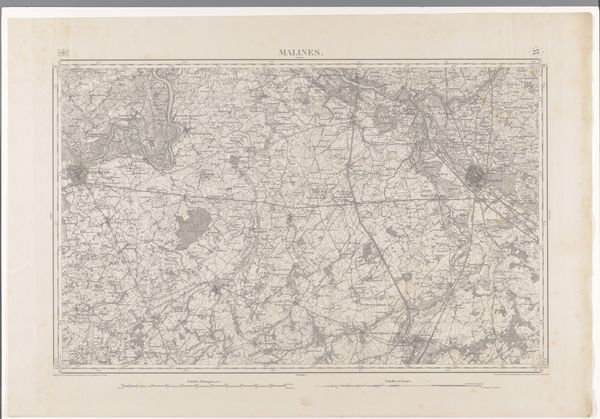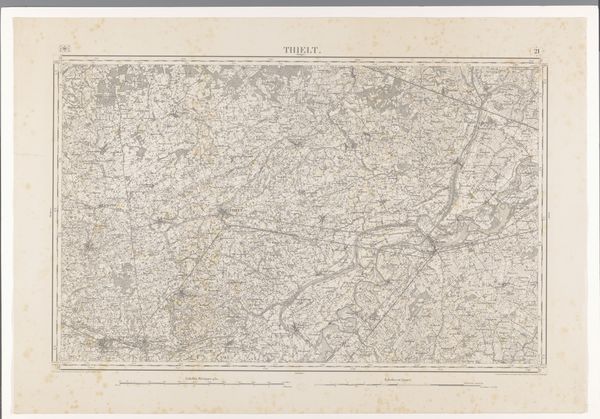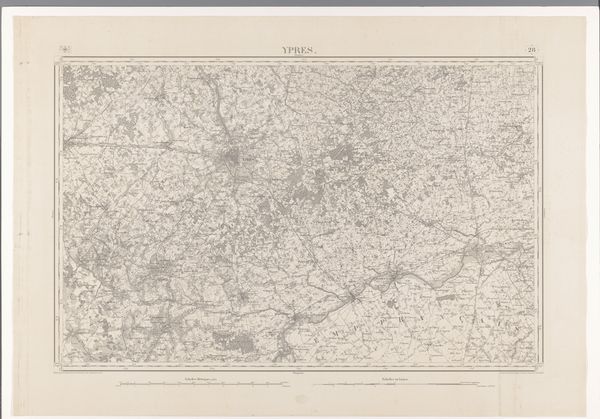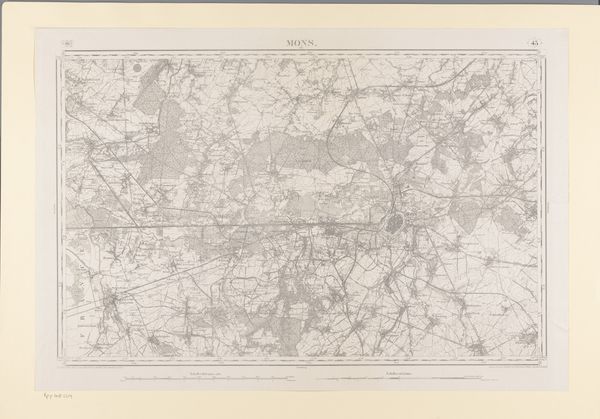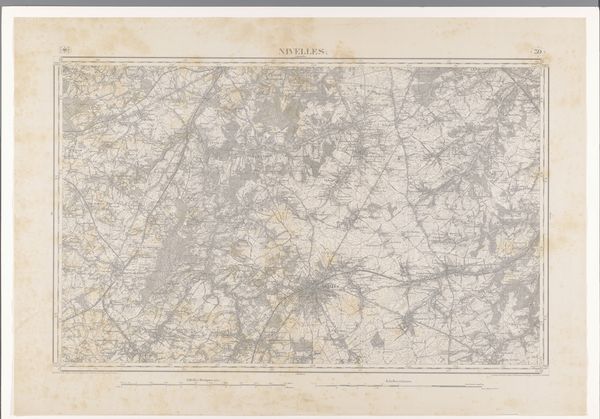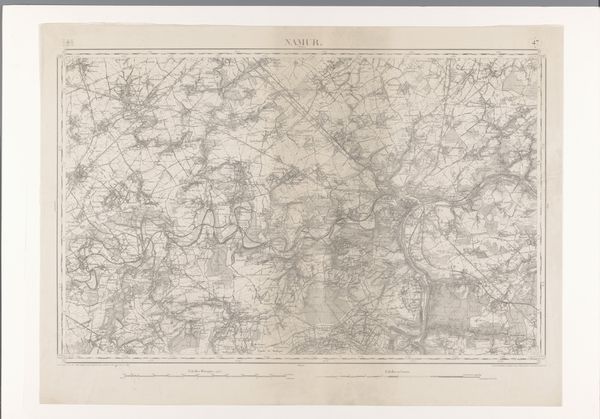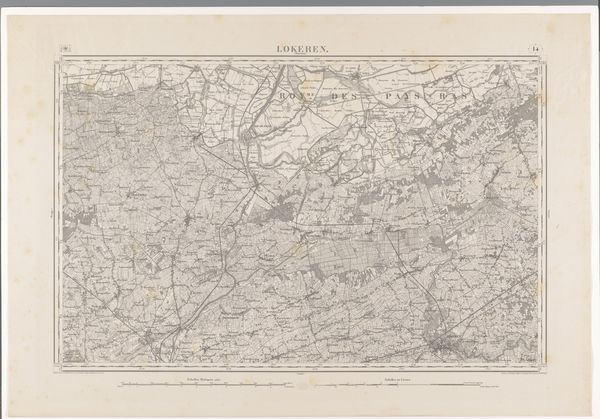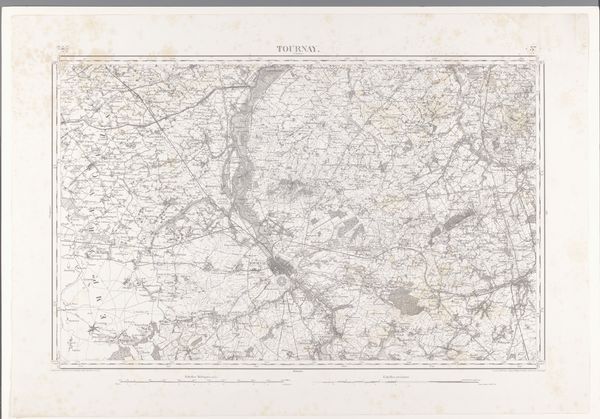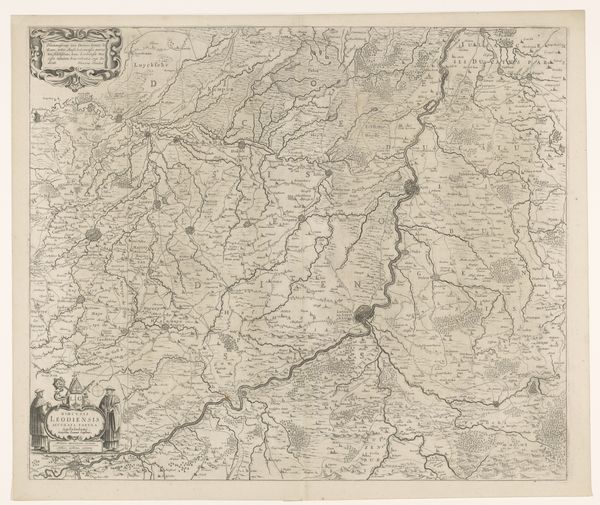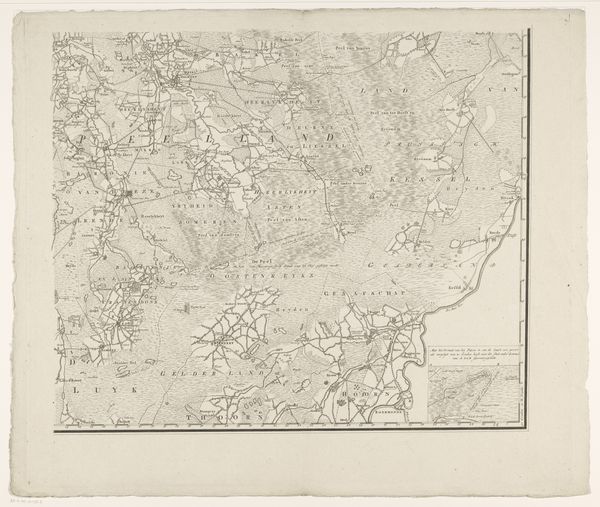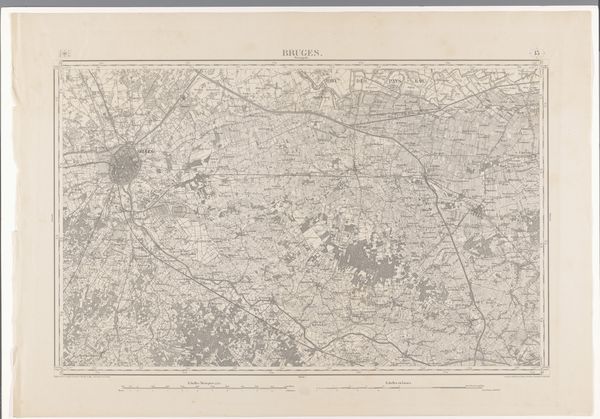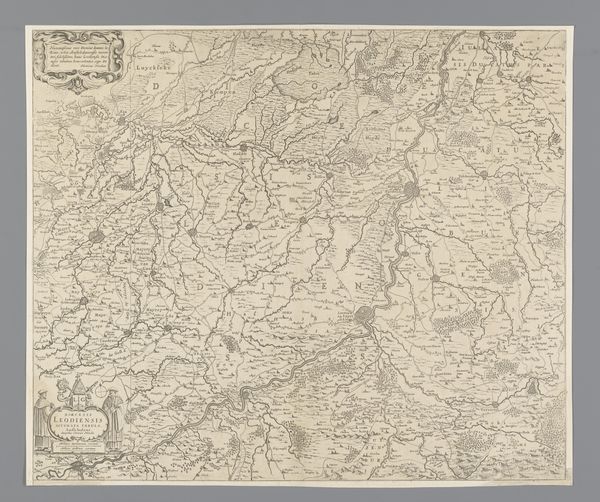
lithograph, print
#
lithograph
# print
#
geometric
#
cityscape
Dimensions: height 605 mm, width 873 mm
Copyright: Rijks Museum: Open Domain
Curator: Here we have a lithograph titled "Kaart van de omgeving van Leuven," or "Map of the Leuven Area," created around 1871 by diverse manufacturers. Editor: Wow, what a beautifully intricate web! My first thought is it reminds me of neural pathways. The way all the roads and districts seem to be branching out—it’s captivating. Curator: That's a compelling interpretation. I’m interested in this map because it allows us to visualize urban development during a period of significant political and social change in Belgium. The level of detail provides a glimpse into the area's infrastructure, land use, and how communities were connected – or, perhaps, disconnected – during this era. Editor: It does spark thoughts of access and privilege. Who gets to travel those well-worn paths and who remains confined to a smaller portion of the map? What stories hide within those pockets? And the forests—they seem like separate worlds altogether, full of mystery. I feel a longing to explore them! Curator: Indeed. Note the scale of the forested areas. Consider the politics of land ownership and resource control at the time, who benefited from access to those resources, and who might have been excluded. Editor: That's a somber reminder. Thinking about maps, it's easy to fall into the trap of seeing them as objective representations, forgetting about the power dynamics that inform their creation. I bet the cartographers had specific priorities in mind, reflecting societal values and structures, consciously or not. Curator: Precisely. Maps are not neutral. They are inherently ideological artifacts. Examining elements such as the chosen projections, the level of detail afforded to certain regions versus others, and even the language used, all offer clues to the mapmaker's perspective and the societal norms they represent. Editor: I see so much now, where initially I only appreciated it for its intricate, mesmerizing quality. It really hits me that every line represents a deliberate decision, a way of shaping understanding. A bit humbling, actually! Curator: Exactly. Engaging with such pieces demands critical inquiry, acknowledging that artworks like this are shaped by political contexts. It provokes an understanding of societal values and intersectional implications that stretch into our present reality. Editor: Thank you. Now, seeing this as more than a beautiful map – recognizing it as a constructed viewpoint, really opens the mind, and the heart, to bigger questions.
Comments
No comments
Be the first to comment and join the conversation on the ultimate creative platform.
